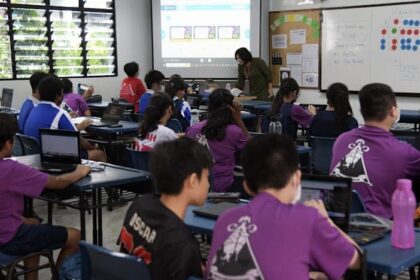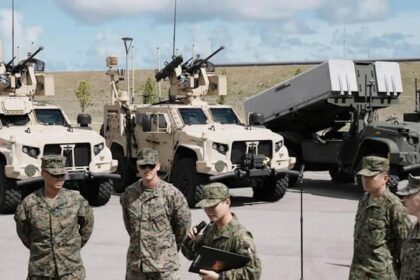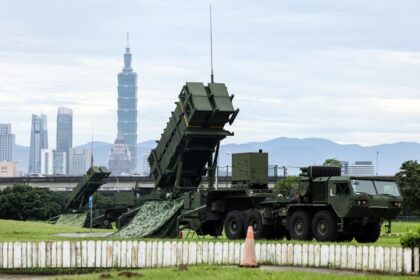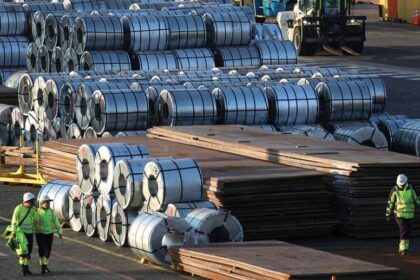Singapore emerges as OpenAI’s Asia launchpad
OpenAI is accelerating its global infrastructure buildout and has placed Singapore at the center of its Asia strategy. The company plans to expand its local team to roughly 50 to 70 people by year end, up from a small launch group when the office opened, as it works more closely with governments, enterprises, and developers across the region. The push comes as usage of ChatGPT has surged to about 700 million weekly active users, a scale that demands vast new data center capacity, specialized chips, and resilient power.
Brad Lightcap, OpenAI’s chief operating officer, has framed the choice plainly. The company will continue to invest in line with demand and is open to expanding further in Singapore or other locations to keep pace with user growth and enterprise adoption. Asia Pacific is one of the company’s fastest growing regions, and Singapore ranks among its top markets for per capita adoption. One in four residents is estimated to use ChatGPT, a striking level of engagement for a country of 5.9 million.
The city state is also home to early marquee customers. Singapore Airlines is integrating advanced prompts and assistants for staff and customer touchpoints, while local tech champions from ride hailing to e commerce have been experimenting with OpenAI models to personalize services, speed up content creation, and improve customer support. OpenAI executives say a bigger on the ground team will help tailor solutions for local languages and industries, expand developer relations, and partner with public agencies on pilot projects.
For Singapore, the arrival of a research driven AI company that builds its own frontier models is a vote of confidence in the country’s tech ecosystem. Officials have highlighted investments in computing resources, a strong talent base, and active programs to promote responsible AI. OpenAI has partnered with AI Singapore to support open datasets for Southeast Asian languages and to deepen the representation of the region in large language models.
Why Singapore and why now
OpenAI’s choice reflects a combination of business demand, developer momentum, and a supportive regulatory environment. Singapore’s digital infrastructure is dense, with excellent international connectivity and a mature data center sector. The government has set out clear frameworks for AI testing and deployment, and local agencies have been quick to engage on practical issues such as safety guardrails, data governance, and workforce skills.
Executives point to the country’s concentration of multinational headquarters and regional developers as a powerful draw. OpenAI is already working with a roster of well known companies including national carrier Singapore Airlines, as well as fast growing platforms in transport, tourism, and gaming. The company’s leaders also cite the scale of the ChatGPT user base and a vibrant developer community, with more than four million developers globally having built applications on OpenAI’s technology. A local hub, they argue, can shorten feedback cycles and lead to features tuned for Asian languages and workflows.
Industry partners in Singapore see the benefits spreading beyond a single company. Leaders from Singapore’s economic and digital agencies have said that OpenAI’s presence can open doors for local startups and deepen collaborations on compute, safety, and skills. AI Singapore, a national research and innovation program, has described the partnership as a way to strengthen Southeast Asian language resources and to give local teams better access to advanced tools.
What is driving the massive data center push
Generative AI is compute hungry. Training and serving large models requires tens of thousands of advanced graphics processors, vast memory, high speed networks, and stable power measured in hundreds of megawatts or even gigawatts. When people ask why a chatbot needs so much infrastructure, the answer is that every user prompt triggers complex calculations across many chips. Multiply that by hundreds of millions of weekly users and the footprint becomes clear.
OpenAI has outlined a multi year infrastructure ramp. In the United States, it is partnering with Oracle and SoftBank on new sites in Texas, New Mexico, and Ohio with an eventual capacity target near 7 gigawatts. Abroad, the company and partners are building a large cluster in Abu Dhabi as part of the Stargate initiative, with an initial one gigawatt phase and plans to grow several times larger. These are among the biggest projects announced in the AI era, and they signal how quickly the industry is racing to add compute.
Sam Altman, OpenAI’s chief executive, has been blunt about what it will take. At a recent press event focused on infrastructure, he said the company intends to move fast on buildouts because compute availability determines how quickly it can deliver new products and features.
After outlining the strategy, Altman said the quiet part out loud.
We will push on infrastructure as hard as possible because it will drive our ability to deliver technology and products.
OpenAI’s partners share that view. Clay Magouyrk, a senior Oracle executive who leads Oracle Cloud Infrastructure, has said large AI sites require coalitions of technology providers and investors. He has emphasized that no single firm can shoulder the full burden of these multibillion dollar campuses alone.
Introducing Oracle’s role in joint projects, Magouyrk underscored the scale and collaboration required.
This work is not possible for any one company to do alone. It takes close coordination across compute, networks, power and finance.
Inside the plan for Asia Pacific
OpenAI’s chief strategy officer, Jason Kwon, has been meeting leaders across Asia Pacific to explore sites and partnerships for future data centers. His itinerary includes Japan, South Korea, Australia, India, and Singapore. These meetings are part of an initiative known as OpenAI for Countries, which invites governments to co invest in sovereign AI capacity, develop local talent, and customize services for national languages and needs.
The company has indicated interest in as many as ten new large data center projects worldwide under this umbrella, with more than 30 countries expressing interest. The first international project is in the United Arab Emirates, backed by local developer G42 and a group of global technology partners. In Asia, discussions have focused on the twin goals of bringing compute closer to users and addressing data sovereignty expectations among regulators and enterprises.
During a visit to India, Kwon spelled out the rationale for tying infrastructure and talent development together.
In the brief time that I have spent in India, it is clear that the country’s leadership understands that maximizing AI’s benefits requires significant investments in two areas: Core infrastructure and cultivating AI talent. By leading in these areas and empowering people to harness frontier intelligence, India can accelerate economic growth.
India is one of OpenAI’s largest user markets, and industry chatter has pointed to the possibility of a one gigawatt site there. Japan and South Korea have strong chip and data center ecosystems, while Australia has land and renewable power resources that could support grid scale installations. Singapore, with its established data center cluster and policy focus on green growth, is also on the shortlist for expansion of regional capacity, either within the country or through nearby cross border campuses connected by fast fiber.
What Singapore stands to gain
The near term impact in Singapore starts with people. A bigger OpenAI team means new roles across partnerships, developer relations, policy, research, and customer engineering. That is the kind of talent mix that helps local companies accelerate pilots and move projects into production. It also increases the chance that Singapore based engineers will co create features and reference solutions that later ship globally.
There is a broader ecosystem effect as well. Telecom players are working with OpenAI to embed conversational assistants into customer channels and network operations. Travel and hospitality groups are testing AI for itinerary planning, service recovery, and marketing content. Banks and insurers are building copilots to help staff summarize documents and flag risks. Each successful deployment builds confidence and expands the pool of practitioners who know how to design prompts, fine tune models, and verify outputs responsibly.
Public sector collaboration is another pillar. OpenAI has engaged agencies that oversee industry development, research funding, and digital trust. Officials have spoken about linking compute access with safety evaluations and skills training so that AI adoption remains responsible and inclusive. Singapore’s national program AI Singapore has welcomed work on open datasets for Southeast Asian languages and on tools that address the needs of multilingual societies.
The Microsoft question and how sales work in Asia
OpenAI’s long running partnership with Microsoft remains central to how its models reach enterprises worldwide. Microsoft provides cloud infrastructure, security, and enterprise sales reach through Azure, while OpenAI focuses on model research and product experiences. In Singapore and across Asia, OpenAI has also been engaging customers directly, especially where clients want to collaborate closely with its researchers or to explore advanced features that move beyond standard packages.
Many large deployments will draw on a mix of partners. Oracle supplies cloud capacity to Stargate projects, and chipmakers such as Nvidia are deeply embedded in the supply chain. In practice, customers often care less about which cloud runs the model and more about reliability, cost, latency, and compliance with data rules. That is one reason OpenAI spends time on both direct relationships and partner channels.
Power, sustainability, and policy
Data centers consume serious power, and generative AI amplifies that challenge. Singapore’s approach in recent years has balanced growth with sustainability. After a brief pause on new data center permits earlier in the decade, the government introduced a framework that favors energy efficient designs, district cooling, and operations that can increasingly tap low carbon power. Several operators now pilot advanced liquid cooling and high density racks that pack more compute into less space while reducing energy waste.
Any large AI buildout must address the power question head on. That includes long term power purchase agreements, investments in energy storage, and participation in green import corridors that aim to bring renewable power from neighbors in Southeast Asia. Operators also need to plan for water conservation, heat reuse, and recycling of server components. Singapore’s regulators have encouraged transparent reporting so that buyers can compare the environmental performance of different facilities.
On the policy front, Singapore has developed practical toolkits for AI governance and is home to one of the world’s first national AI safety institutes. Companies that deploy chatbots in sensitive domains are expected to test for bias, privacy issues, and security vulnerabilities. OpenAI has been engaging on these topics while also building safeguards into its consumer and enterprise products.
Risks and unknowns
Even with momentum in Singapore and across Asia, there are open questions that could shape the pace of investment. Access to advanced chips is still a bottleneck, and lead times for power distribution equipment can be lengthy. Construction of hyperscale sites often runs into local land use or permitting constraints. Geopolitics adds another layer. Some governments want in country processing for sensitive data, while others are weighing rules on how frontier models are trained and evaluated.
There are also debates about where to place new capacity. Singapore has the network, talent, and policy clarity that global companies like. Land and power remain finite, so some capacity may sit in neighboring markets that connect into Singapore’s digital core. That hub and spoke model is already visible in regional projects across Malaysia and Indonesia that serve Singapore based users and enterprises with low latency links.
Still, the direction of travel is clear. OpenAI wants more compute close to its users, and Asia is a central growth engine for its products. Singapore’s role as an operations and partnerships hub, combined with potential regional data center projects, positions the country to benefit from the next wave of AI buildouts while managing the environmental and safety questions that come with them.
At a Glance
- OpenAI is expanding its Singapore office to roughly 50 to 70 staff as it establishes a regional hub for Asia Pacific.
- ChatGPT activity sits near 700 million weekly users, driving a push to add large new data center capacity.
- In the United States, OpenAI and partners are planning multi gigawatt sites in Texas, New Mexico, and Ohio.
- The first international Stargate project is underway in Abu Dhabi, starting at 1 gigawatt with plans to scale several times larger.
- OpenAI leadership is visiting Japan, South Korea, Australia, India, and Singapore to explore Asia data center locations and sovereign AI partnerships.
- Singapore’s strengths include high per capita adoption, enterprise demand, a skilled workforce, and active AI governance and safety programs.
- Local customers include Singapore Airlines and regional tech platforms, with pilots across travel, telecom, finance, and public services.
- Power and sustainability are central issues, with Singapore favoring energy efficient designs and low carbon power over time.
- OpenAI continues to work closely with Microsoft while also partnering with Oracle and others on cloud capacity for large AI sites.
- Chip supply, power availability, and evolving regulations remain the main constraints on the pace and location of new projects.












